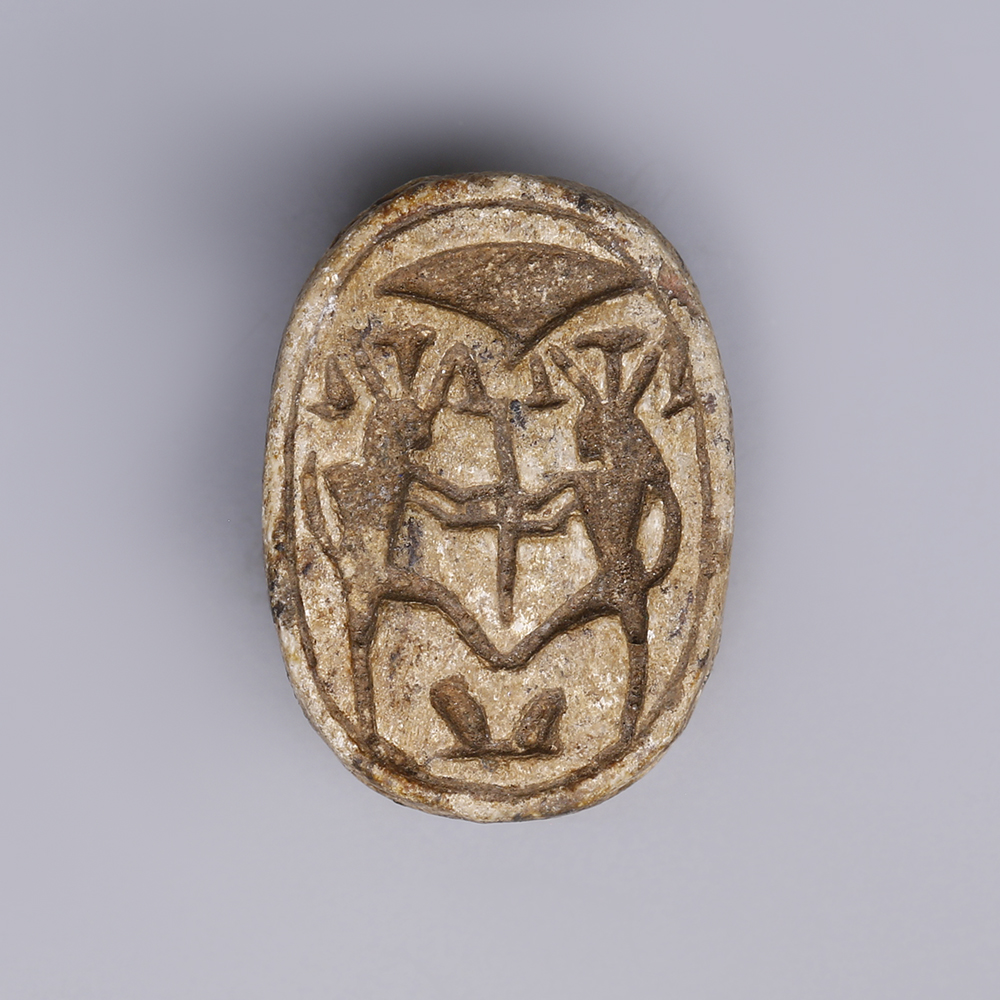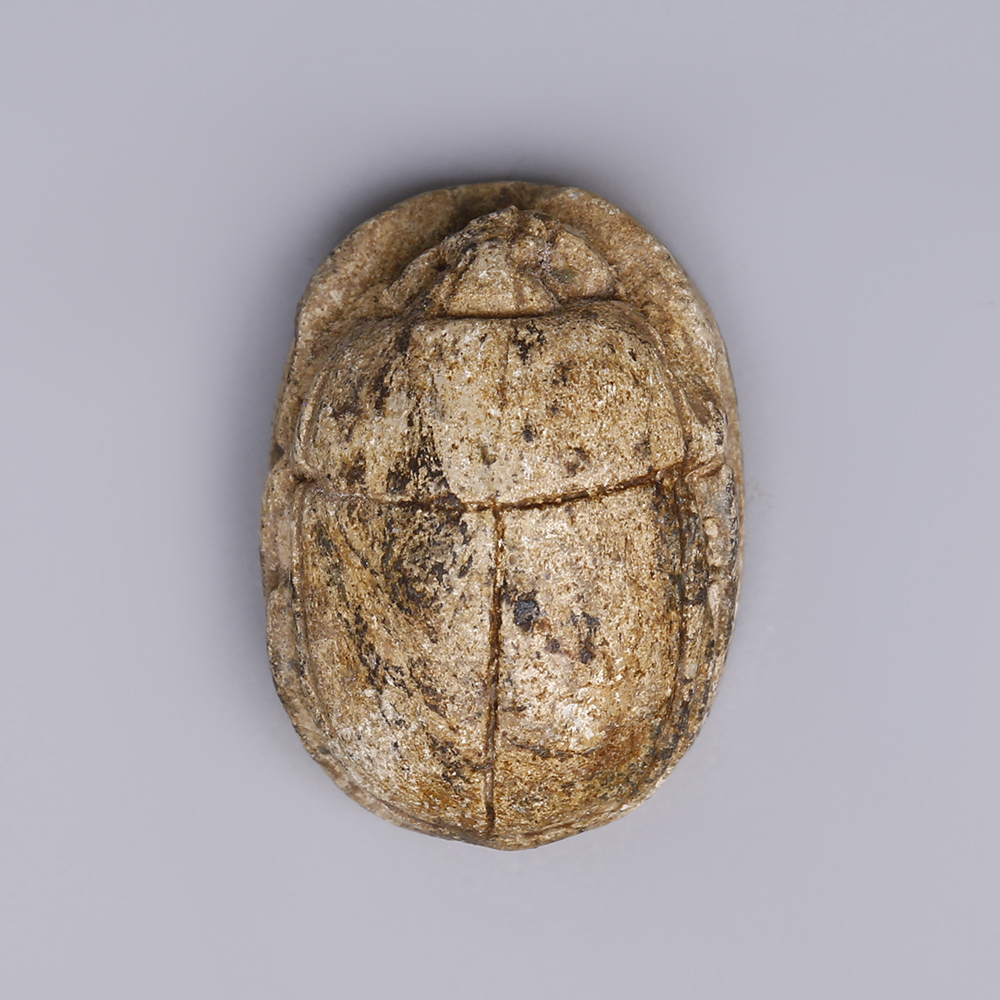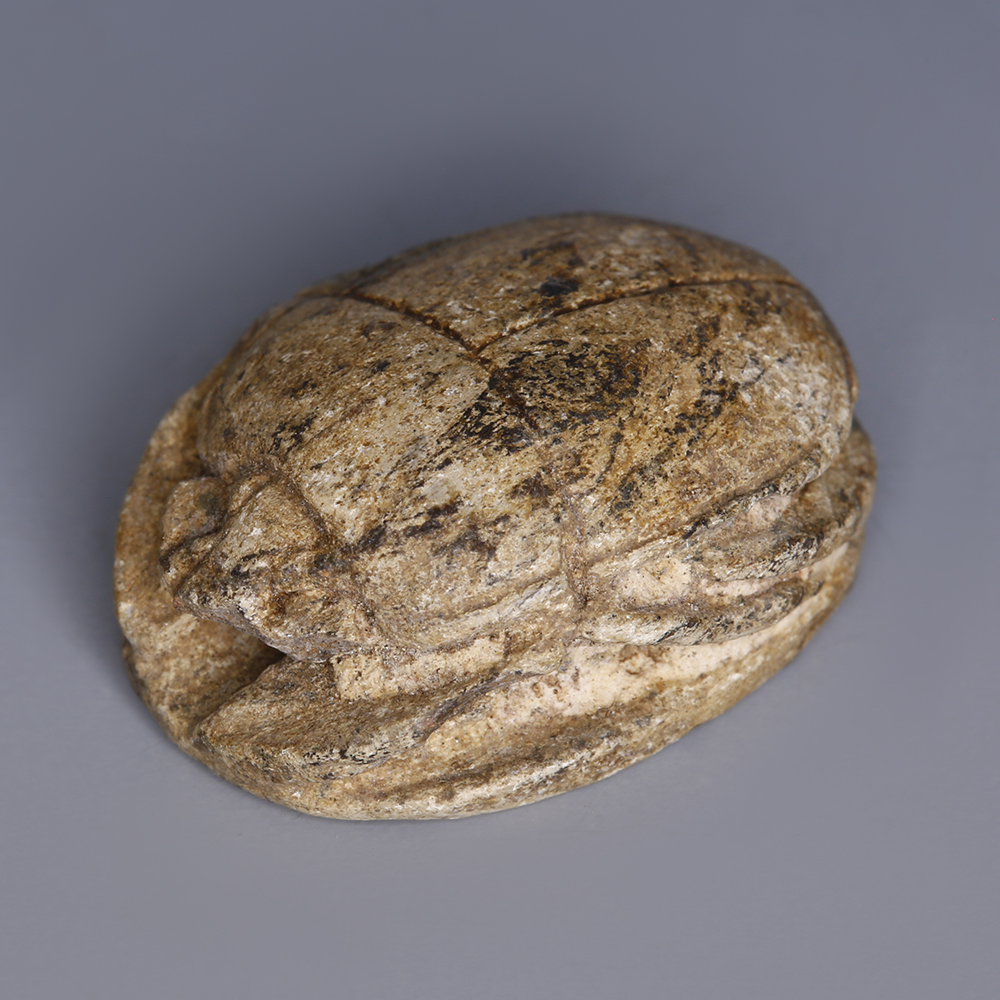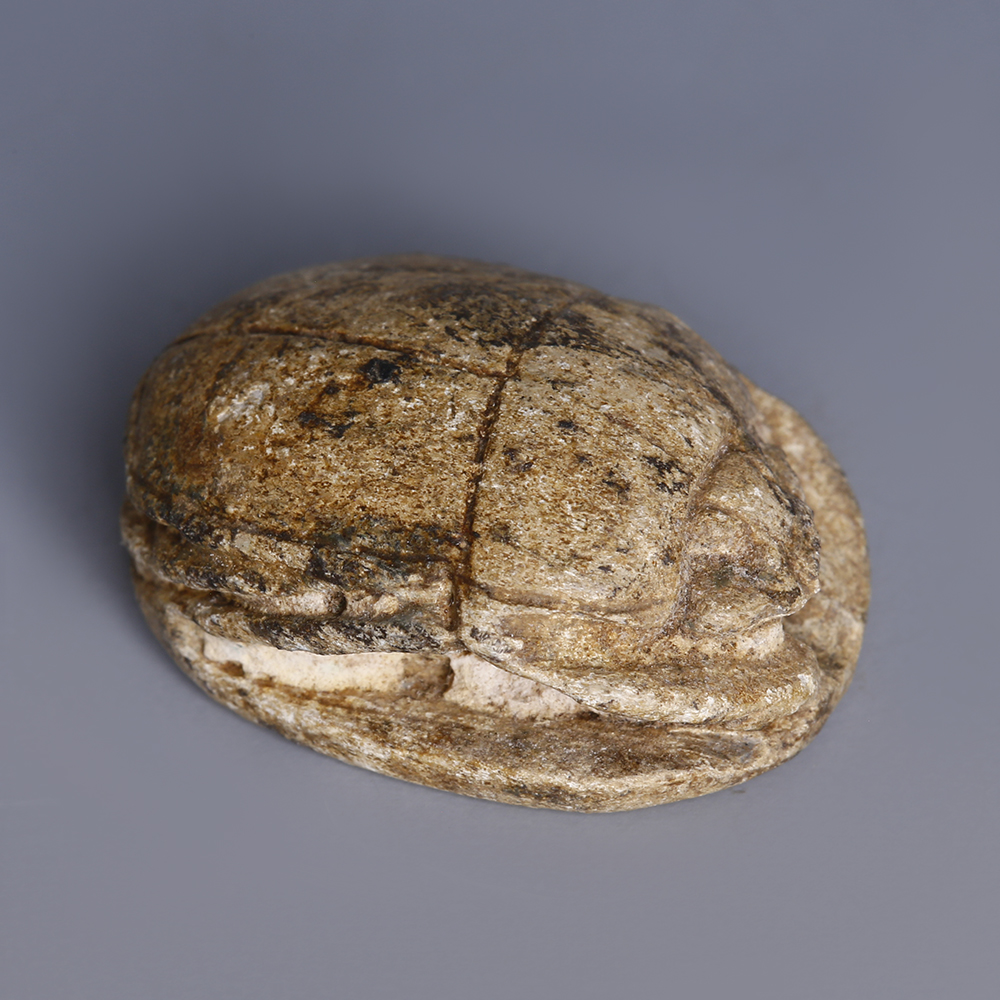The Egyptian god Hapy (or Hapi) was the personification of the annual flooding of the river Nile. He was both a god of Upper and Lower Egypt and was depicted slightly differently in each region. Within Upper Egypt he was frequently depicted with the areas respective heraldic plant, the papyrus. Whilst in Lower Egypt, Hapy was often crowned with the heraldic lotus plant, as can be seen here. He was associated with a number of gods and goddesses, including Nun, Osiris and Ra. Hapy was sometimes thought of as the father of the sun god, Ra, who rose up from the waters of Nun on the day of creation, and thus would be the father of all life forms.
The depiction here attests also to Hapy’s role as a unifying deity of both Upper and Lower Egypt. He is often depicted holding, as an attribute, the sema-tawy symbol. This includes the combination of three symbols: the lung and windpipe sign (𓄥 – smꜣ – a determinative for ‘unite’), the papyrus sign and the lily sign. As determined by it’s translation, the ‘smꜣ’ sign represented the unification of the land. The payrus sign represent Lower Egypt and the lily hieroglyph represented Upper Egypt. Whilst Hapy does not hold the sema-tawy symbol here, the dual representation with identical gestures indicates a reference to a unified Egypt.
To find out more about Ancient Egyptian amulets please see our relevant blog post: Egyptian Amulets and their Meanings.



